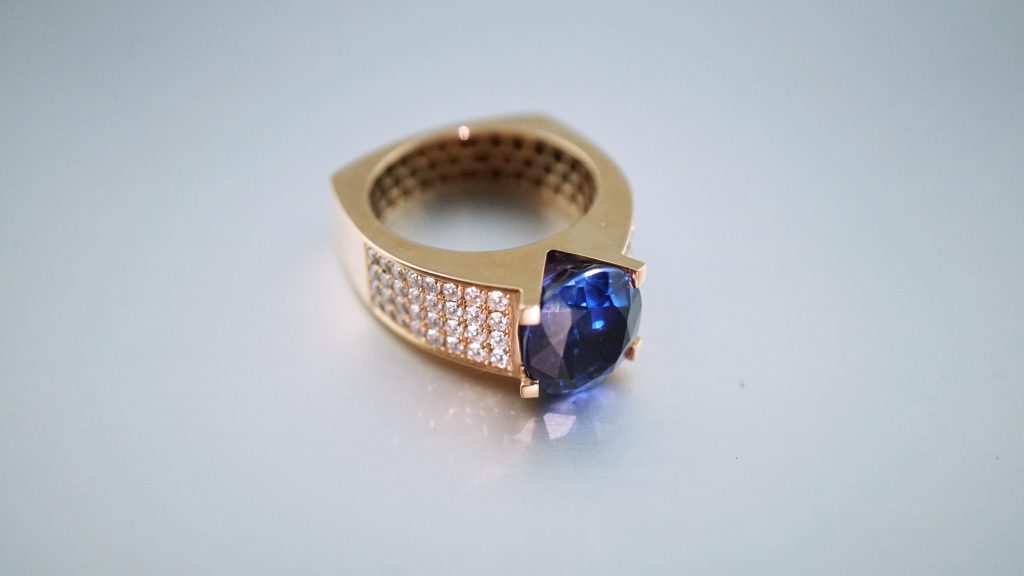
Imagine stumbling upon a vintage ring at a flea market that takes your breath away – it’s unique, intricate, and possibly worth a fortune. But before you get too excited, how can you be sure it’s not just a cheap knockoff?
Fear not, fellow treasure hunters, because this article reveals the secrets to dating antique rings and distinguishing a priceless find from a mere trinket.
Get ready to become an antique ring detective!
History of Antique Rings

Let’s take a trip down memory lane and explore the world of antique rings.
Antique rings were all the rage during the Georgian Era, from 1714 to 1837. These rings were typically crafted from yellow gold, but silver and rose gold were also used.
Elaborate details and designs, such as bows, ribbons, and floral patterns were popular, while gemstones like diamonds, garnets, topaz, and amethysts were commonly put in closed-back settings.
Fast forward to the Victorian Era, which lasted from 1837 to 1901, and we see a shift towards more romantic and sentimental designs.
Queen Victoria’s reign popularized colored gemstones like sapphires, emeralds, and rubles, which were set in ornate designs. Hearts, bows, and snakes symbolized eternal love and wisdom, while rose gold and yellow gold rings continued to be widely used.
From 1901 to 1910, the Edwardian Era saw a departure from the ornate and heavy designs of the Victorian Era towards lighter and more delicate designs. Platinum became popular due to its strength and flexibility, but diamonds were the preferred gemstone.
Filigree and openwork designs were more popular, with lace-like patterns adding a feminine touch to the rings. Colored gemstones like sapphires, emeralds, and rubles were frequently paired with diamond rings during this era.
Lastly, we have the Art Deco Era, from the 1920s to the 1930s. This era was about bold, modern designs with prominent geometric shapes and symmetry.
Platinum and white gold rings were popular, while antique diamonds, emeralds, rubies, and sapphires were still the preferred gemstones. Art movements like Cubism and Futurism often inspired the designs, with popular motifs including sunbursts, zigzags, and fan shapes. Simplicity and elegance were key features during this era.
Antique Wedding Rings
For centuries, love and commitment have been symbolized through the exchange of wedding and engagement rings. From ancient times to the present day, these rings have been a staple in celebrating the unity of couples.
Back in the day, wedding rings were crafted from materials like woven plant fibers, symbolizing the unbreakable bond between the partners. As the years passed, gold and silver took center stage, and precious stones became a popular addition to the rings. The medieval period was about elegance and sophistication, with intricate designs and lavish ring embellishments.
The Renaissance brought creativity to the wedding ring scene with detailed engravings and a wide range of designs. The Georgian, Victorian, Edwardian, and Art Deco eras saw the rise of many styles and designs, with so many still cherished and loved today.
Identifying Antique Rings

Here are some ways to identify vintage rings.
Inspect the Ring
Take a good look at the overall design and condition. These details can provide insight into the ring’s age and history. Is it showing signs of old age? Are there missing stones or loose prongs? If positive, you are probably dealing with an antique ring.
Identify Hallmarks and Makers’ Marks
Think of hallmarks and maker’s marks as the fingerprints of the ring. These stamps or engravings reveal essential information about the ring’s material purity, county of origin, and even the jeweler who made it. It’s like being the detective piecing together clues to uncover the ring’s history.
Research the Style and Design
Learning about the different styles of rings from different eras is helpful and intriguing. For example, if you see a ring with elaborate details and designs like bows, ribbons, and floral patterns, you’ll immediately be able to connect the ring with the Georgian era. On the other hand, bold, geometric shapes may point to the Art Deco era.
Examine the Gemstones and Settings
Gemstones and settings reveal plenty about the ring’s age and value. Certain gemstones like rose-cut diamonds were popular during some periods, while emeralds, rubies, and sapphires were favored in others. Pay attention to the quality and size of the stones and the craftsmanship of the setting.
Consider the Metal Type and Quality
The metal used in the ring can also provide clues about its age and value. For example, platinum became popular during the Edwardian Era, while gold was frequently used for Georgian and Victorian rings.
Look for hallmarks indicating the metal purity, which can affect the ring’s value. The higher the metal purity, the more valuable the ring.
Valuing Antique Rings

Once you’ve identified an antique ring, it’s time to determine its value.
Here are some factors that can affect its worth.
Rarity and Condition
Like any other antique, rarity and condition are critical factors determining its value. A ring that’s in good condition and also rare will be worth more than a common, damaged one.
Gemstones and Settings
The gemstones’ type, quality, and size also affect the ring’s value. Intricate and well-crafted settings are worth more than simple ones.
Historical Significance and Provenance
Finally, the ring’s historical significance and provenance increase its value immensely. For instance, did the ring belong to a famous person or have a documented history? These details make rings more valuable and fascinating.
Conclusion
If you read our article carefully, you now have the skills to impress your friends and family with your vintage ring expertise!
What’s more, by following the tips and tricks outlined in this article, you’ll be able to identify antique rings’ unique features and characteristics and even determine their approximate age.

Leave a Reply